Art & Exhibitions
‘We Changed People’s Mentality’: What It Was Like on the Ground in Egypt as Officials Unveiled the Pyramids’ First-Ever Contemporary Art Show
Get a peek behind the scenes of this unprecedented event.
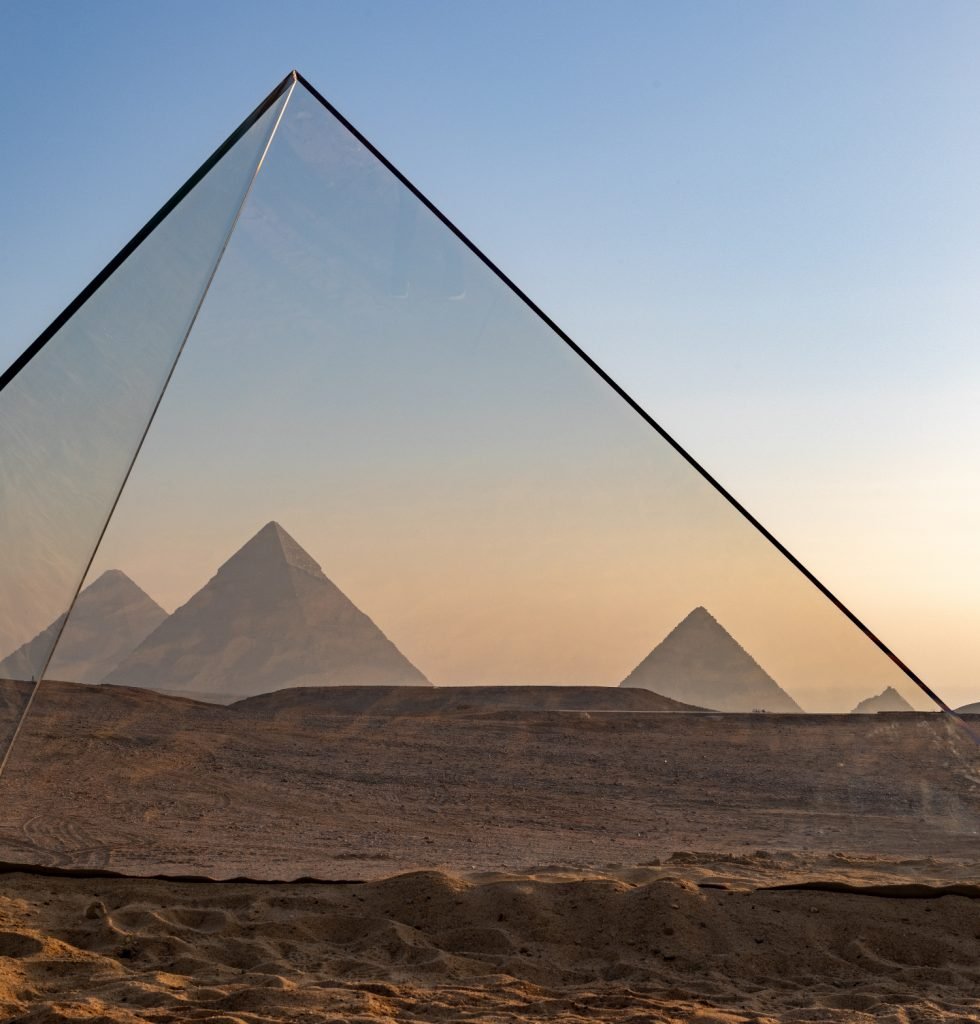
Get a peek behind the scenes of this unprecedented event.

Barbara Pollack

The pyramids of Egypt have survived for 4,500 years, despite the more recent waves of tourists and camel-entrepreneurs encircling these magnificent feats of architecture. Now, for a brief three-week period, contemporary art will also share space on the Giza Plateau with a ring of 10 site-specific art projects in the exhibition, “Forever is Now,” curated by Simon Watson and organized by Art D’Égypte.
Art D’Égypte, founded in 2016 by the Alexandria-born French-Egyptian arts consultant Nadine Abdel Ghaffar, has a track record of inserting contemporary art into historic sites in Cairo and creating a dialogue between past and present. As Ghaffar explained just before the opening of the Giza exhibition: “Ancient Egypt and this civilization influenced the whole world and our message is a token of appreciation and a sign of hope.”
It took three years of negotiations with UNESCO, the Egyptian Ministry of Antiquities and Tourism and several embassies to achieve her dream of installing contemporary works near the pyramids at Giza, the country’s most famous archaeological site. “For [authorities], it’s a site of antiquities, it’s heritage, but contemporary art is not appealing to them,” Ghaffar said. “We changed people’s mentality and now they actually say that the art makes these ancient walls speak.”
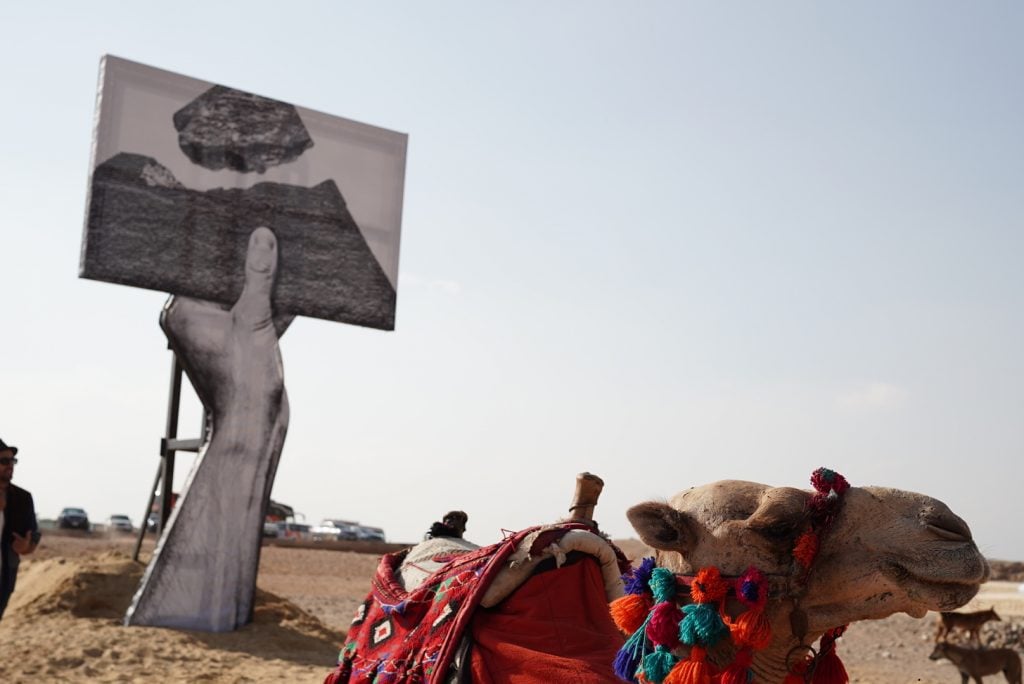
JR’s Greetings from Giza on opening day. Courtesy of the artist and Forever Is Now. Photo: MO4NETWORK.
On Thursday, October 21, the public had its first opportunity to test out whether contemporary art enhanced or detracted from the last remaining Seventh Wonder of the Ancient World. Rather than merely block the view—an impossibility given that the Great Pyramid is over 475 feet tall—these art works transform seeing into an experiment in interactivity. JR nailed it with Greetings from Giza, a billboard of a hand that seems to be removing the top of the pyramid when viewed from the proper angle, and visitors lined up to take photographs of the comical sight.
L.A. artist Gisela Colón (who recently participated in Frieze Sculpture in Regent’s Park) took a less ironic tack by placing Eternity Now (Parabolic Monolith Sirius Titanium—a 30-foot-long and 8-foot-high mound made of aerospace-grade carbon fiber—at the foot of the Sphinx. Resembling a rising sun, it reflected shades of gold as the light shifted over the course of a day. Colón, who grew up in Puerto Rico, worked with a Latinx-owned aerospace company to realize the sculpture, bringing a collaborative spirit to the project. “My team is over 150 people and all of us who took part in this are so proud. I get to contribute to a little part of 4,500 years of history and it is a conversation across time,” she said. “It’s about unifying the human race and how we are all globalized now, and artists can lead that conversation.”
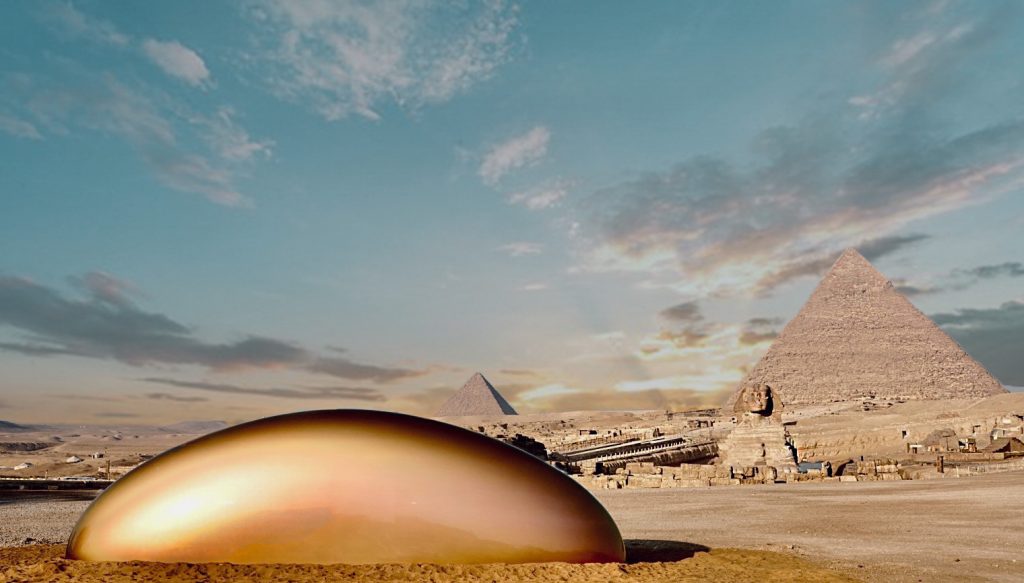
Gisela Colón, Eternity Now (2021). Courtesy of the artist and Forever Is Now. Photo: MO4NETWORK.
The artist João Trevisan, a newcomer from Brazil, explored parallel colonialist histories with Body That Rises, a tower of wooden railroad ties, a possible crate for an imaginary obelisk, while Egyptian artist Sherin Guirguis invited visitors to push-pull the moving parts of her monument to feminism, Here Have I Returned.
Ai-Da, an artificial intelligence art-making robot created by British artist Aidan Meller, was temporarily detained in customs for fear that she could be used for spying, but she eventually made it to the opening. Other participating artists included Alexander Ponomarev (Ukraine), Lorenzo Quinn (Italy), Moataz Nasr (Egypt), Shuster and Moseley (UK), Stephen Cox (UK), and Sultan bin Fahad (Saudi Arabia).
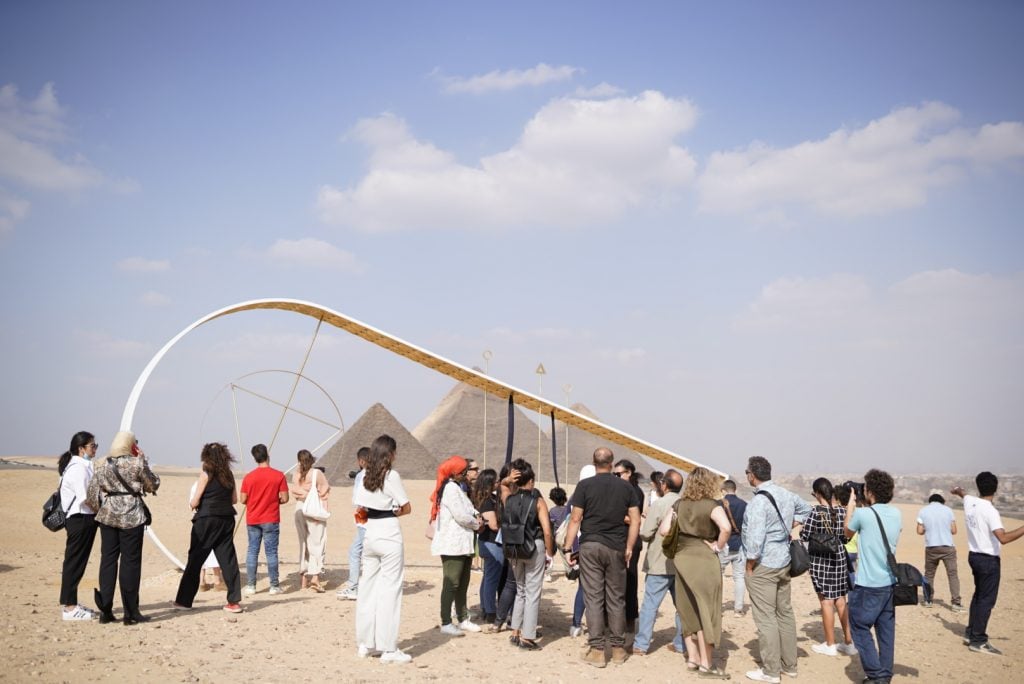
Opening day at Forever Is Now.
“Honestly, I had to go to bat for certain artists, I would not take no for an answer,” said Simon Watson, an art advisor and independent curator who had a gallery in Manhattan’s SoHo district in the 1980s and is now based in Brazil and New York.
After visiting Egypt five years ago at the invitation of Cairo artist Ibrahim Ahmed, Watson was approached by Ghaffar about a year ago to help organize “Forever Is Now”, and he had to perform what he calls “a waltz between the artists and the bureaucrats.” He is thrilled with the results. The pyramids are massive and could have overshadowed the exhibition if not for Simon’s strong vision. “Now, the site is going to attract new audiences,” he said. “People will be asked to think about the themes there through a new lens.”
Planned during the pandemic, there were many challenges to this show. In addition to the bureaucratic tangle involved with staging contemporary art at a UNESCO World Heritage site, there was the issue of raising funds for the project. Art D’Égypte was supported by a long list of partners including the local sponsors EgyptAir, Afridi Bank, the Sawiris Foundation for Social Development, Abou Ghalib Motors and global shipping company DHL. Cooperation from the British and French embassies in Egypt was also essential, although it created additional hurdles around the selection of artists.
Help also came from the U.S. Embassy in Cairo, which contributed $229,000 to support the participation of American artists and the transportation of artworks. “Cultural diplomacy and cultural exchange directly and uniquely advance the U.S.-Egyptian strategic partnership by building enduring people to people ties,” U.S. Ambassador Jonathan R. Cohen said in a statement. “Our support for this historic exhibition on the Giza plateau has done just that.”
Many of the artists had to raise their own funds for the fabrication and installation of their monumental sculptures, with Watson’s assistance. “Every year, we start a project without a budget, without knowing how we are going to finish, but I believe in the universe and the ‘fairy dust’ that helps us every time,” Ghaffar said. One downside is that this enormous endeavor will end on November 7, too short a run at such an incredible site.
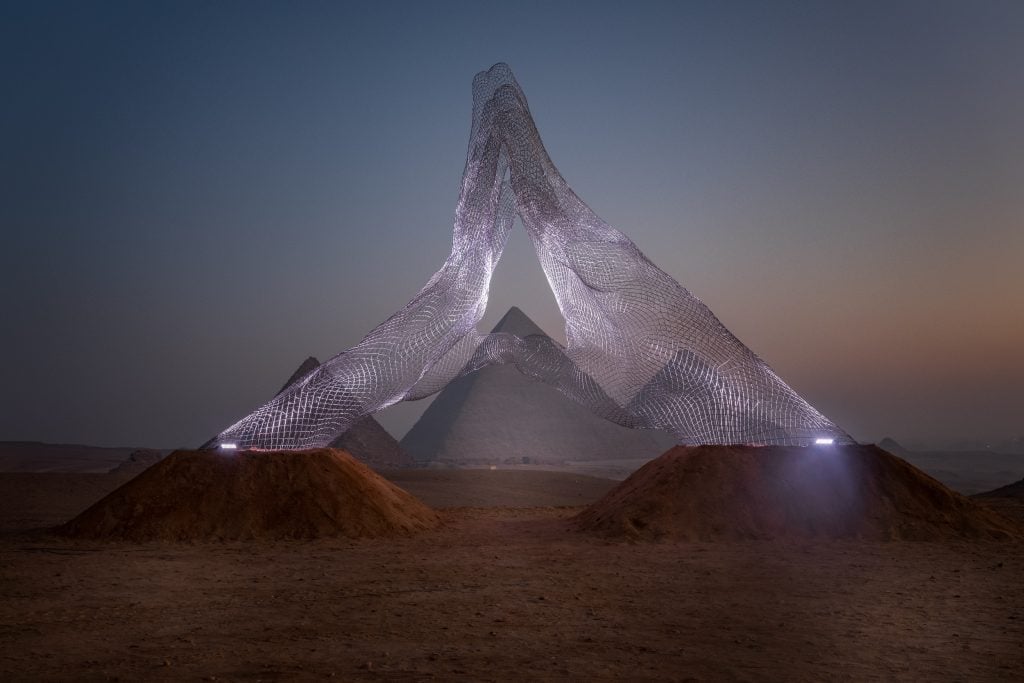
Lorenzo Quinn, Together (2021). Courtesy of the artist and Forever Is Now. Photo: MO4NETWORK.
Ghaffar is something of force of nature, accomplishing a great deal with an all-women team in a country where inequality is pervasive. Recently awarded the Ordre des Arts et des Lettres, France’s highest honor recognizing a significant contribution to the arts and literature, she is determined to change not only Egypt’s perception of women but also build an appreciation for its own contemporary art.
Part of Art D’Égypte’s mission and a sign of its success is its ability to bring contemporary artworks out into public spaces where tourists and pedestrians must see them. The company has previously worked with UNESCO on three previous projects: “Eternal Light: Something Old, Something New exhibition” at the Egyptian Museum in Cairo in 2017, “Nothing Vanishes, Everything Transforms” at the Manial Palace and Museum in 2018, and “Reimagined Narratives” on Al-Muizz Street in historic Cairo in 2019.
Opening just weeks before “Forever is Now,” Ghaffar also organized a series of temporary exhibitions in 12 empty shops and local cultural centers downtown to create the Cairo International Art District, funded mainly by Al-Ismaelia Real Estate Investment.
The city already has a vibrant contemporary art scene and there are several Egyptian artists who have strong international careers such as Youssef Nabil, Ghada Amer and street artist Ganzeer. But there are many more who deserve recognition, like Moataz Nasr and Sherin Guirguis, both featured in “Forever is Now.” Standing nearby the Great Pyramid, Ghaffar said of her most recent effort to draw more attention to Egypt’s potential as an arts hub: “We are showing the transcendence between our history and contemporary art, which I view as a lens to our society today.”